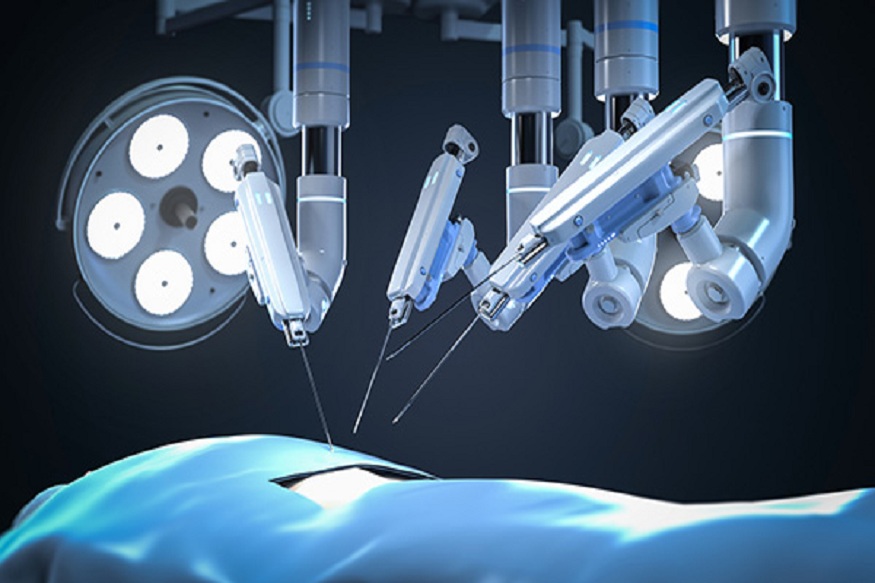Spinal surgery has long been associated with extended recovery, postoperative complications, and patient hesitation. As procedures have become more refined, so has technology supporting them. From imaging systems to robotic assistance, today’s operating rooms are equipped with tools designed to make procedures safer and more precise. Dr. Larry Davidson, an expert in spinal surgery, highlights that modern tools are helping reduce risks that once discouraged patients from seeking care and improving outcomes for a wide range of conditions.
As surgical techniques have become more targeted, technology has become central to every step, from diagnosis to recovery. Technologies such as intraoperative navigation, 3D imaging, and robotics offer surgeons greater visibility and control, improving the chances of successful outcomes while minimizing the chance of error. For patients, these improvements often translate to shorter hospital stays, less pain, and a faster return to normal life.
Better Imaging for Better Decisions
One of the most important steps in any surgery is accurate planning. That begins with clear, detailed images of the spine’s structure. Traditional X-rays and MRI scans are still used widely, but more advanced imaging systems now offer surgeons real-time, high-definition views during the procedure itself.
Intraoperative CT scans and fluoroscopy provide live updates on instrument positioning, ensuring that every step is monitored. These systems act like a GPS for the body, helping the surgeon avoid vital structures and navigate complex anatomy. This level of detail is particularly important in procedures involving the spinal cord or nerve roots, where even small missteps can lead to significant complications.
Navigation and Robotics in the Operating Room
Spinal navigation systems allow for image-guided surgery, merging preoperative scans with intraoperative data to provide a dynamic map of the spine. These systems guide the surgeon’s tools in real time, reducing the likelihood of misplacement and helping protect sensitive structures.
Robotic assistance takes this concept a step further. With robotic platforms, surgeons can pre-plan every detail of the procedure, from incision size to the angle of screw placement. During the operation, the robot helps execute that plan with consistent precision. While the surgeon remains in control, the robot provides additional stability, especially in tasks that require repetitive or highly accurate movements.
Smaller Incisions, Fewer Complications
Technological progress has also supported the shift to minimally invasive spinal procedures. With tools like tubular retractors, endoscopes and high-speed drills, surgeons can operate through incisions sometimes less than an inch long. These small openings mean less trauma to muscles and ligaments, fewer wound-related complications and less postoperative pain.
Smaller incisions are especially important for patients with health conditions such as diabetes or obesity, where large surgical wounds may not heal as easily. Minimizing the size and number of incisions also reduces the likelihood of infection and speeds up the recovery process.
In the past, spinal surgery often meant a hospital stay of several days, followed by weeks of bed rest. Minimally invasive procedures supported by technology are helping many patients go home the same day and return to light activity within days.
Real-Time Feedback Improves Confidence
Surgeons today operate with access to more real-time information than ever before. From motion-sensing devices to neuromonitoring systems, these tools deliver live updates about the patient’s condition during surgery. Neuromonitoring, for instance, tracks nerve function throughout the procedure, alerting the surgical team if a nerve is irritated or at risk of damage.
This constant stream of feedback allows for quick adjustments, preventing long-term complications. These systems are particularly valuable for complex cases involving spinal tumors or deformities. They allow the surgeon to proceed with confidence while protecting critical neurological structures.
Dr. Larry Davidson notes, “Personalizing treatment based on each patient’s unique anatomy and fracture pattern allows us to deliver better results and reduce the risk of complications.” This perspective underscores the shift from one-size-fits-all procedures to patient-centered care. It reflects a growing recognition that successful outcomes depend not only on the technology used but on how well it is tailored to the individual patient.
Fewer Revisions, More Predictable Outcomes
Another significant benefit of improved surgical technology is the reduction in revision surgeries. In the past, poorly placed screws or misaligned hardware often led to continued pain and the need for a second operation. With the guidance of real-time imaging and robotics, the accuracy of implant placement has increased, making long-term success more likely.
Predictable outcomes benefit the patient and contribute to reduced healthcare costs and improved system efficiency. When surgeries go as planned and recovery proceeds smoothly, fewer resources are needed for follow-up care, hospital readmissions, and pain management.
Supporting Recovery Through Precision
Postoperative complications such as blood loss, infection, or nerve injury have traditionally been the biggest concerns associated with spinal surgery. Today’s technology directly addresses these issues by enhancing visibility, improving accuracy, and minimizing exposure.
Better planning tools mean shorter surgeries. More efficient procedures reduce the time a patient is under anesthesia, which lowers the chance of complications in the recovery room. And because smaller incisions heal faster, physical therapy can begin sooner, supporting a more active and engaged recovery process.
Technology is also playing a role in post-surgical monitoring. Wearable sensors and mobile apps are emerging to help track recovery milestones, medication adherence and pain levels, offering a clearer picture of how the patient is progressing at home.
The Importance of Surgical Expertise
While technology has become a key player in spine care, its benefits are fully realized only when paired with skilled surgical judgment. Operating these systems effectively requires training, experience, and the ability to respond to the unpredictable nature of surgery.
Hospitals and training centers are responding by incorporating advanced technology into surgical education. Surgeons participate in simulated procedures, live labs and continuing education courses to stay current with the latest tools and techniques. This investment in knowledge helps ensure that technology enhances, not replaces, clinical decision-making.
Choosing the Right Tools for the Right Patient
Not every case requires advanced navigation or robotic assistance. The key is selecting the right technology for the patient’s condition, anatomy, and personal health goals. Open communication between the provider and the patient helps set expectations and determine the best approach.
Whether the goal is to remove pressure on a nerve, stabilize a fracture, or correct spinal curvature, today’s technology offers the tools to perform these tasks more safely and effectively. As these methods become more widely available, patients can expect a smoother surgical journey with fewer risks and improved long-term results.



